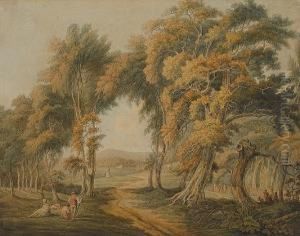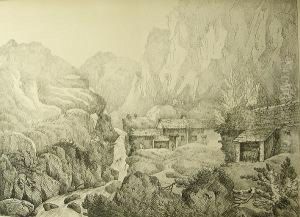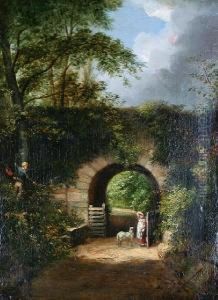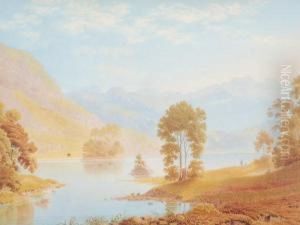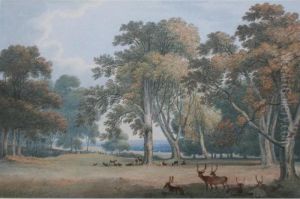William Frederick Wells Paintings
William Frederick Wells was an English painter and etcher born in 1762 in London. He was primarily known for his landscape watercolors, which often depicted scenes from the British countryside. Wells was a member of the Royal Academy and one of the founding members of the Old Water-Colour Society, which later became the Royal Watercolour Society, an indication of his significance in the art community of his time.
Wells began his artistic training under the landscape painter Paul Sandby, who was one of the most prominent figures in British watercolor painting during the 18th century. Under Sandby's guidance, Wells developed his skills and his own style, which was characterized by meticulous attention to detail and a delicate touch with the watercolor medium.
As he established his career, Wells often traveled around Britain to find inspiration for his works. His paintings were known for their accurate representation of nature and for their atmospheric effects, capturing the changing lights and moods of the English landscapes. Wells exhibited frequently at the Royal Academy from 1784 onwards, and his works were also shown at the Society of Artists.
In 1804, he was among the group of artists who founded the Old Water-Colour Society, which was an organization set up to promote the art of watercolor painting in Britain. This was a pivotal moment for the medium, which had previously been considered less prestigious than oil painting. Wells served as the Society's President from 1808 to 1812, and again from 1821 to 1823. His involvement with the Society helped to elevate the status of watercolor art and foster a community of artists dedicated to the medium.
Wells' contributions to the art world were not limited to his own paintings. He was also a teacher, sharing his knowledge and techniques with a number of students. His legacy is preserved through his artworks and through his influence on the generation of watercolor painters that followed. William Frederick Wells died in 1836, but his work continues to be recognized for its role in the development of British landscape watercolor painting.
